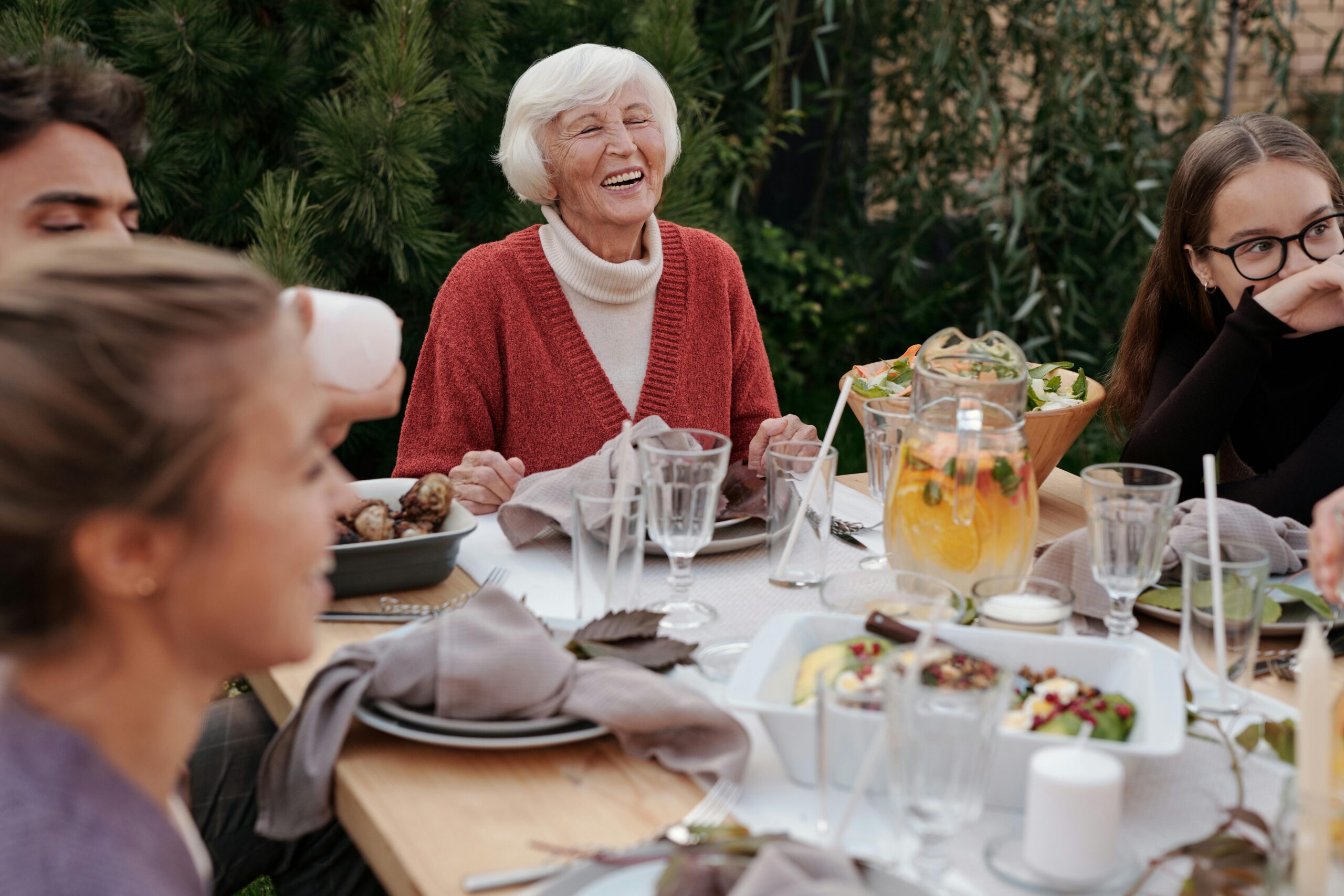
We all have parents. While some of us have lost theirs, others may have no good memories of them. Hopefully many of us still have their parents alive and / or have good memories of them.
And we probably have noticed that, with age, our parents lost some of their strength and agility. Or maybe we remember our grandparents in their old age and how after a certain point they lost their strength and withered away.
There are also others who I have met: I remember Melina who told me about her grandfather of 95 “…and he still walks up to the roof and replaces broken tiles himself. He’s so spry.”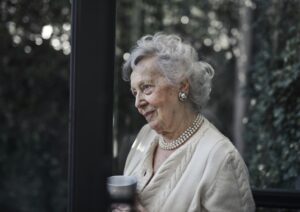
Another student of mine, who I remember very well, was 86 years young when she started to take lessons with me. That lady had a phantastic family name: Frau Leibundgut — literally Ms ’Bodyandwell’. Talk about taking initiative – at 86!
Losing strength as you age might seem normal, but it does not have to be this way.
We all have some kind of experience, and we even may have experienced great counterexamples to withering away. How can one explain all these differences? In other words, as we all are growing older, day by day, people have different reactions to a situation that is similar for all of us. And there’s a proven way to rebuild your muscle, energy, and confidence.
Good nutrition and enough movement have a strong and direct impact on our quality of life and longevity, as much as our thinking, our mental outlook.
“Eat Move & Think” captures in direct terms what impacts these different ways of growing old. There’s a proven way to rebuild your muscle, energy, and confidence right there.
Sarcopenia? What is that?
Recently, someone said to me, “I suffer from sarcopenia.” I was struck by the use of this term—a neologism for an ancient phenomenon: the loss of muscle mass and strength with age. Derived from Greek, sarcopenia combines sarx (flesh) and penia (lack). First coined in 1988, it describes the generalized, age-related loss of muscle that affects up to 50% of people over 80, often leading to frailty, falls, disability and untimely death.
But what’s the point? What is happening to our metabolism?
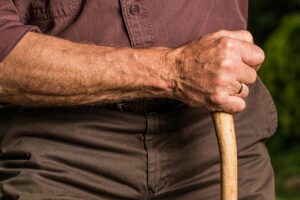
It boils down to one thing: balance. The human body constantly breaks down and rebuilds tissue in a dynamic process. In youth, this process is balanced — tissue breakdown (catabolism) and tissue building (anabolism) are in sync.
But as we age, the balance tips. Metabolism is getting “a little slower”, and slowing down, the rebuilding can potentially no longer keep pace with the breakdown.
So, what’s the point? The point is this:
You can influence how you age. Movement is your ticket to a resilient, capable body. Choose to stay active—and thus you choose strength over frailty.
Bone: A Case Study in Adaptation
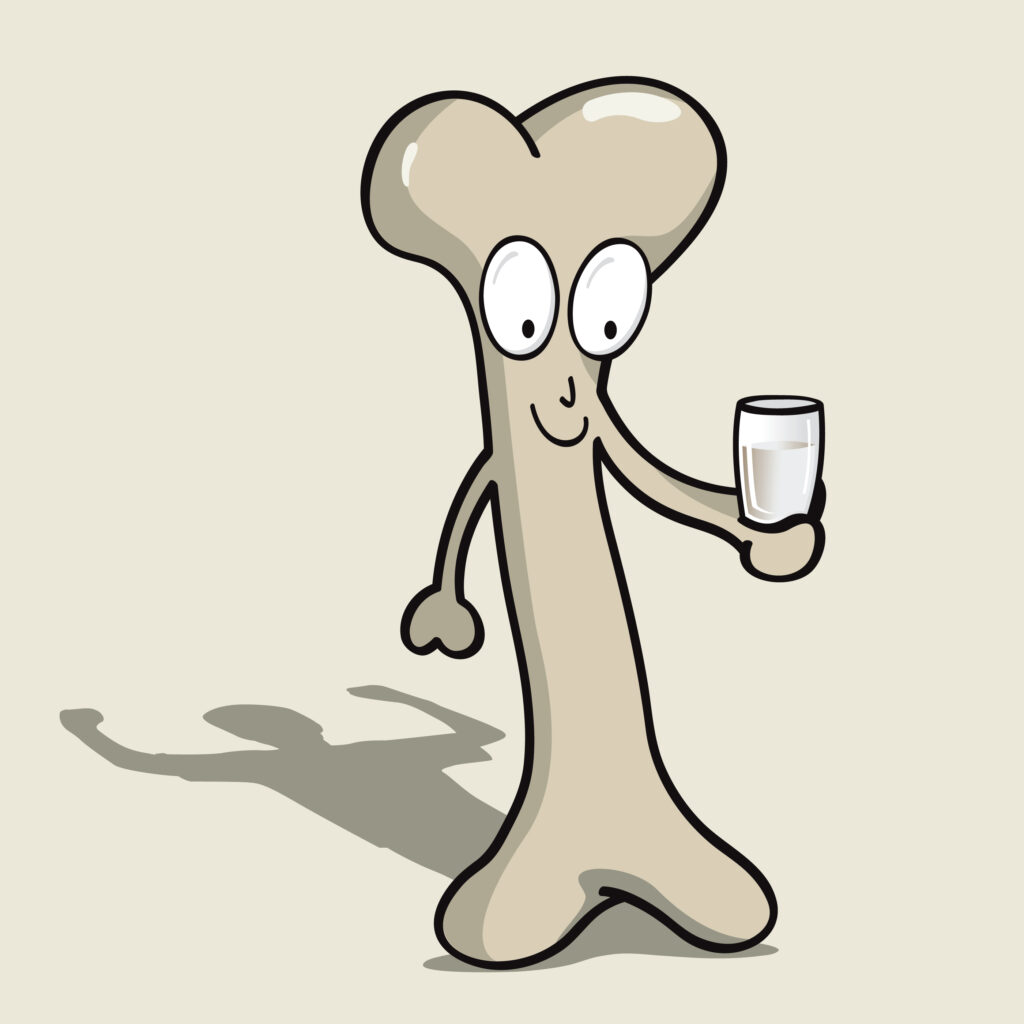
To understand why staying active matters, let’s talk about bone. Bone is living tissue—not inert or static, as many imagine. It’s constantly being remodeled: old, brittle bone is broken down by osteoclasts and replaced by osteoblasts laying down new bone.
In youth, this system favors growth, with bone formation outpacing resorption, at a rate as much as 4:1, favoring anabolism. Between 25 and 50, the two processes are roughly equal. But old bone becomes weak and brittle over time.It’s a constant. New matrix is needed, continually replacing the old matrix, thereby renewing the strength of the bone. However, as we age, bone getting brittle begins to outstrip both formation and resorption, leading to a net loss.
Slowly our situation gets tight and tighter, can you see that?
This decline isn’t inevitable. AND here is the good news — it can be mitigated.
Staying Active Matters As We Get Older
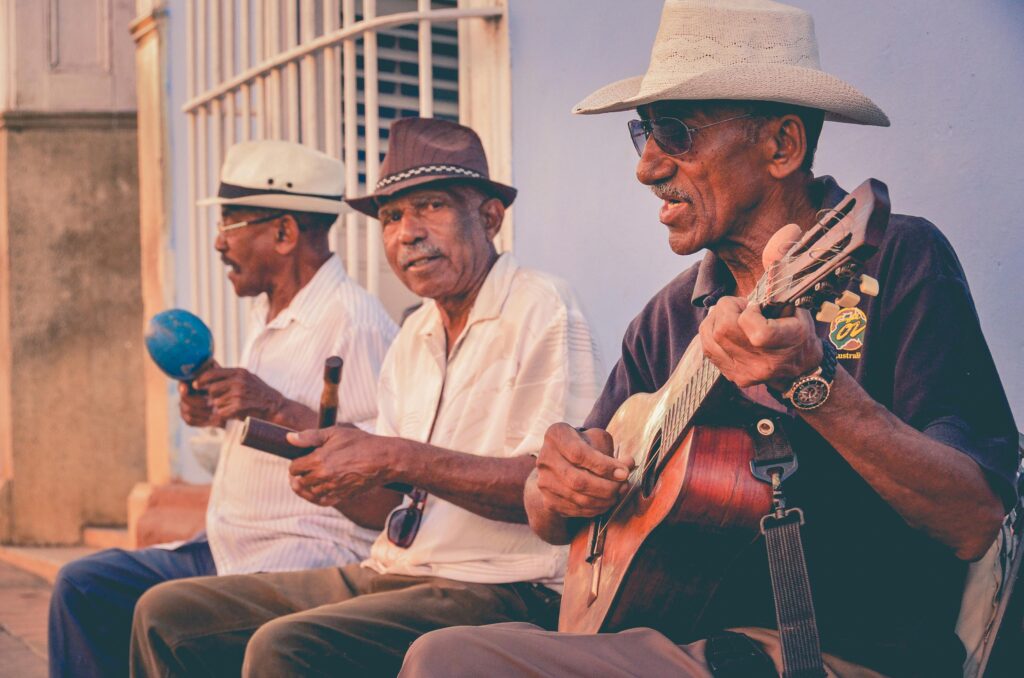
Your critical task is to keep our metabolism up to speed when it tends to slow down.
How can you do that? Easy peasy.
First of all, the strength of a bone adapts to the load placed on it. The greater the weight, the thicker the bone.
Secondly, the actual shape of the bone can change to adapt to the stress to which it is subjected.
These two concepts have been combined into a single idea, known as Wolff’s Law. It’s a fundamental principle in bone physiology, that highlights how bones reshape and strengthen in response to mechanical stress.
So, it’s easy, bone adapts to the loads placed on it. Greater stress leads to stronger, denser bones. What do you need to do? Put a moderate stress on your bones – like walking some distance, carrying your shopping bag e.g. Totally feasible for the most of us – easy peasy
From Bones to the Whole System
Bone health is just one piece of the puzzle. Now, let’s talk about the neuromusculoskeletal system – a fancy term for the interplay of our brains & nerves, muscles and bones. While the term is a mouthful, the concept is straightforward: when you stop using any part of that system, your whole system suffers.
The great news? You can reverse muscle loss quickly with movement. Start reclaiming your strength and mobility today, and you won’t just maintain muscle mass — you’ll rebuild it, and your whole system will say a resounding: Thank you!
A Word on Aging: You’re in Control
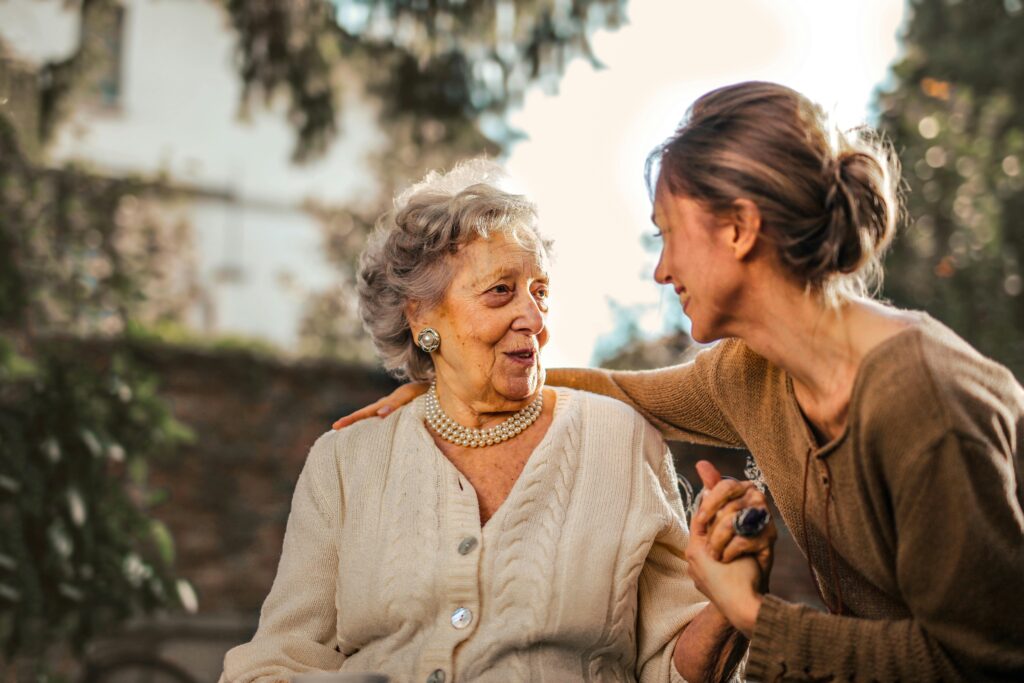
Consider a study by Fiatarone et al., where frail adults aged 86 to 96 underwent strength training. The results were astounding: after just six weeks, participants gained over 170% in strength. This proves it’s never too late to build muscle and resilience.
However, muscle loss in aging, or sarcopenia, isn’t just about inactivity. Malnutrition also plays a role. As we age, our sense of thirst and hunger diminishes, often leading to insufficient nutrition. This underscores the importance of mindful eating alongside regular movement.
How to Rebuild Your Strength and Combat Muscle Loss:
3 Proven Strategies to Help You Stay Strong and Active
The silver-haired generation is growing, and we must address the risks of muscle and bone loss. The answer lies in EMT: Eat, Move, Think (EMT) differently — a proactive approach to staying strong, independent and healthy.
Slower metabolism and muscle loss don’t have to become your reality. Proper nutrition and regular physical activity are non-negotiable tools for staying strong, independent, and healthy. When you move, you signal your body to stay in balance, maintaining the vital systems that support you.
Movement is your greatest ally. Unlike medications with a list of side effects, movement offers only positive benefits. And its side effects doesn’t have to be in the small print. You can write it in capitals. You could (and should) shout it from the roof tops. It’s the ultimate prescription for health and longevity.
Movement and activity aren’t optional—they’re essential for maintaining not just bones but the entire neuromusculoskeletal system. Without consistent stress and stimulation, bones weaken, muscles atrophy, and frailty sets in.
The Takeaway
Age-related bone fragility isn’t due to bones «deteriorating» but rather a slowed ability to replace brittle tissue. The solution is simple: stay active. Regular movement and the compression stress of physical activity are your best tools to maintain your resilience as you age.
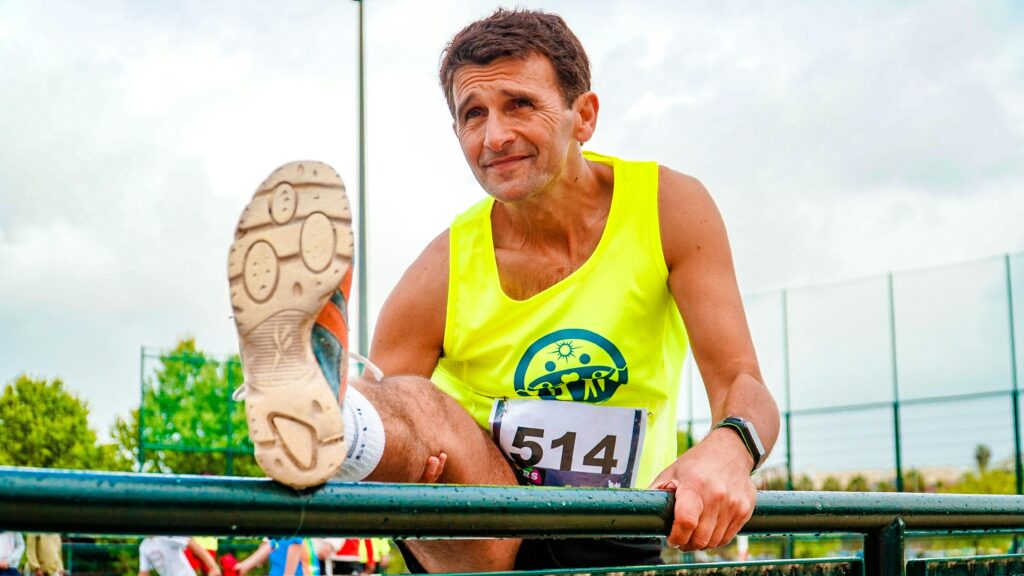
Ready to take the first step toward a stronger, more active you?
Click below, book a call with me to get started and make today the turning point in your journey!
Because you can get out of this situation with verve and dignity easily:
Make movement a non-negotiable part of your day. Start small:
- Carve out 15 minutes a day and take a brisk 15-minute walk.
- Get off the bus one stop earlier.
- Each step counts towards a stronger, healthier life for your years to come!
With a twinkle in the eye, let me channel Obi-Wan Kenobi:
“May The Force Be With You!”
Fühlst Dich jeden Tag schwächer? Selbst die einfachste Aufgabe fällt schwerer als früher? Und Deine Kräfte schwinden schneller, als Du es je für möglich gehalten hättest?

Wir alle haben Eltern. Während einige von uns ihre Eltern verloren haben, haben andere vielleicht keine guten Erinnerungen an sie. Hoffentlich haben viele von uns ihre Eltern noch am Leben und/oder haben gute Erinnerungen an sie.
Und wir haben wahrscheinlich bemerkt, dass unsere Eltern mit zunehmendem Alter etwas von ihrer Kraft und Beweglichkeit verloren haben. Oder vielleicht erinnern wir uns an unsere Großeltern in ihrem hohen Alter und daran, wie sie ab einem bestimmten Punkt ihre Kraft verloren und dahinsiechten.
Ich habe auch andere Menschen kennengelernt: Ich erinnere mich an Melina, die mir von ihrem 95-jährigen Großvater erzählte: „… und er geht immer noch auf’s Dach und ersetzte kaputte Ziegel selbst. Er ist so rüstig.“

Eine andere Schülerin, an die ich mich sehr gut erinnere, war 86 Jahre jung, als sie anfing, bei mir Unterricht zu nehmen. Diese Dame hatte diesen fantastischen Familiennamen: Frau Leibundgut — das nenne ich Initiative – mit 86!
Dass man mit zunehmendem Alter an Kraft verliert, mag normal erscheinen, aber das muss nicht so sein.
Wir alle haben Erfahrungen gemacht und vielleicht sogar großartige Gegenbeispiele zum Absterben erlebt. Wie lassen sich all diese Unterschiede erklären? Mit anderen Worten: Während wir alle Tag für Tag älter werden, reagieren Menschen unterschiedlich auf eine Situation, die für uns alle ähnlich ist. Und es gibt eine bewährte Methode, um Muskeln, Energie und Selbstvertrauen wieder aufzubauen.
Eine gute Ernährung und ausreichend Bewegung haben einen starken und direkten Einfluss auf unsere Lebensqualität und Langlebigkeit, ebenso wie auf unser Denken und unsere mentale Einstellung.
„Eat Move & Think“ (Essen, Bewegung und Denken) fasst direkt zusammen, welche Auswirkungen diese verschiedenen Arten des Älterwerdens haben. Es gibt einen bewährten Weg, um deine Muskeln, Energie und dein Selbstvertrauen wieder aufzubauen.
Sarkopenie? Was ist das?
Vor kurzem sagte jemand zu mir: „Ich leide an Sarkopenie.“ Ich war überrascht über diese Verwendung dieses Begriffs – ein Neologismus für ein uraltes Phänomen: den Verlust von Muskelmasse und Kraft mit zunehmendem Alter. Der Begriff Sarkopenie leitet sich aus dem Griechischen ab und setzt sich aus sarx (Fleisch) und penia (Mangel) zusammen. Der Begriff wurde erstmals 1988 geprägt und beschreibt den allgemeinen, altersbedingten Verlust von Muskelmasse, von dem bis zu 50 % der über 80-Jährigen betroffen sind und der häufig zu Gebrechlichkeit, Stürzen, Behinderungen und vorzeitigem Tod führt.
Aber worum geht es hier? Was passiert mit unserem Stoffwechsel?

Es läuft auf eine Sache hinaus: Gleichgewicht. Der menschliche Körper baut in einem dynamischen Prozess ständig Gewebe ab und baut es wieder auf. Im Erwachsenenalter ist dieser Prozess bei uns ausgeglichen – Gewebeabbau (Katabolismus) und Gewebeaufbau (Anabolismus) sind im Gleichgewicht.
Doch mit zunehmendem Alter gerät dieses Gleichgewicht aus der Balance. Der Stoffwechsel wird „etwas langsamer“, und durch die Verlangsamung kann der Wiederaufbau möglicherweise nicht mehr mit dem Abbau Schritt halten.
Und was bedeutet das?
Ganz einfach, es bedeutet Folgendes:
Du kannst beeinflussen, wie du alterst. Bewegung ist dein Ticket zu einem widerstandsfähigen, leistungsfähigen Körper. Entscheide dich dafür, aktiv zu bleiben – und entscheide dich damit für Stärke statt Schwäche.
Knochen: Eine Fallstudie über Anpassung

Um zu verstehen, warum es wichtig ist, aktiv zu bleiben, lass‘ uns über Knochen sprechen. Knochen sind lebendes Gewebe – nicht träge oder statisch, wie viele denken. Sie werden ständig umgebaut: Alte, spröde Knochen werden von Osteoklasten abgebaut und durch Osteoblasten ersetzt, die neuen Knochen bilden.
In der Jugend begünstigt dieses System das Wachstum, wobei die Knochenbildung die Resorption um das bis zu 4-Fache übersteigt und den Anabolismus begünstigt. Zwischen 25 und 50 sind die beiden Prozesse in etwa gleich. Aber alter Knochen wird mit der Zeit schwach und brüchig. Das ist eine Konstante. Es wird stets neue Matrix benötigt, die die alte Matrix kontinuierlich ersetzt und so die Festigkeit des Knochens erneuert. Mit zunehmendem Alter übersteigt jedoch die Brüchigkeit der Knochen sowohl die Bildung als auch die Resorption, was zu einem Nettoverlust führen würde.
Langsam wird unsere Situation angespannter, kannst Du nachvollziehen, oder?
Dieser Rückgang ist jedoch nicht unvermeidlich. UND hier ist die gute Nachricht – er kann gemildert werden!
Aktiv bleiben ist wichtig, wenn wir älter werden.

Deine entscheidende Aufgabe ist es, unseren Stoffwechsel auf Trab zu halten, wenn er dazu neigt, langsamer zu werden.
Wie kannst du das tun? Ganz einfach.
Erstens passt sich die Festigkeit eines Knochens an die Belastung an, der er ausgesetzt ist. Je größer das Gewicht, desto dicker der Knochen.
Zweitens kann sich die tatsächliche Form des Knochens ändern, um sich an die Belastung anzupassen, der er ausgesetzt ist.
Diese beiden Konzepte wurden zu einer einzigen Idee zusammengefasst, die als Wolffsches Gesetz bekannt ist.
Es handelt sich um ein grundlegendes Prinzip der Knochenphysiologie, das verdeutlicht, wie sich Knochen als Reaktion auf mechanische Belastung umformen und stärken.
Es ist also ganz einfach: Knochen passen sich den auf sie einwirkenden Belastungen an. Größere Belastungen führen zu stärkeren, dichteren Knochen. Was müssest Du tun? Deine Knochen mäßig belasten – z. B. indem Du eine Strecke zu Fuß zurücklegst oder Deine Einkaufstasche trägst. Für die meisten von uns ist das absolut machbar – ein Kinderspiel.
Von den Knochen auf ’s gesamte System übertragen
Die Knochengesundheit ist nur ein Teil des Puzzles. Lasst uns nun über das neuromuskuloskelettale System sprechen – ein komplizierter Begriff für das Zusammenspiel von Gehirn und Nerven, Muskeln und Knochen. Der Begriff ist zwar etwas sperrig, das Konzept ist jedoch einfach: Wenn du aufhörst, einen Teil dieses Systems zu nutzen, leidet das gesamte System.
Die gute Nachricht? Du kannst den Muskelabbau durch Bewegung schnell rückgängig machen. Beginne noch heute damit, deine Kraft und Beweglichkeit zurückzugewinnen, und du wirst nicht nur deine Muskelmasse erhalten, sondern sie wieder aufbauen, und dein gesamter Körper wird dir lautstark danken!
Ein Wörtchen zum Thema Altern: Du hast die Kontrolle!

Hier ist ein Denkanstoss: eine Studie von Fiatarone et al., in der gebrechliche Erwachsene im Alter von 86 bis 96 Jahren ein Krafttraining absolvierten. Die Ergebnisse waren erstaunlich: Nach nur sechs Wochen hatten die Teilnehmer über 170 % an Kraft gewonnen. Dies beweist, dass es nie zu spät ist, Muskeln und Widerstandsfähigkeit aufzubauen.
Der altersbedingte Muskelabbau oder die Sarkopenie ist jedoch nicht nur auf Inaktivität zurückzuführen. Auch Mangelernährung spielt eine Rolle. Mit zunehmendem Alter nimmt unser Durst- und Hungergefühl ab, was häufig zu einer unzureichenden Ernährung führt. Dies unterstreicht, wie wichtig neben regelmäßiger Bewegung auch eine bewusste Ernährung ist.
Wie du deine Kraft wieder aufbaust und Muskelschwund bekämpfst:
3 bewährte Strategien, die dir helfen, stark und aktiv zu bleiben
Die Generation der Silber- und Grauhaarigen wächst, und wir müssen uns mit den Risiken des Muskel- und Knochenschwunds befassen. Die Antwort liegt in EMT: Eat, Move, Think (EMT) – ein proaktiver Ansatz, um stark, unabhängig und gesund zu bleiben.
Ein langsamer Stoffwechsel und Muskelschwund müssen nicht deine Realität werden. Richtige Ernährung und regelmäßige körperliche Aktivität sind unverzichtbare Werkzeuge, um stark, unabhängig und gesund zu bleiben. Wenn du dich bewegst, signalisierst du deinem Körper, im Gleichgewicht zu bleiben und die lebenswichtigen Systeme, die dich unterstützen, aufrechtzuerhalten.
Bewegung ist dein größter Verbündeter. Im Gegensatz zu Medikamenten mit einer Liste von Nebenwirkungen bietet Bewegung nur positive Vorteile. Und ihre Nebenwirkungen müssen nicht im Kleingedruckten stehen. Du kannst sie in Großbuchstaben schreiben. Du könntest (und solltest) sie von den Dächern rufen. Es ist das ultimative Rezept für Gesundheit und Langlebigkeit.
Bewegung und Aktivität sind nicht optional – sie sind unerlässlich für die Erhaltung nicht nur der Knochen, sondern des gesamten neuromuskuloskelettalen Systems. Ohne regelmäßige Belastung und Stimulation werden die Knochen schwächer, die Muskeln verkümmern und es kommt zu Gebrechlichkeit.
Die Erkenntnis
Altersbedingte Knochenbrüchigkeit ist nicht auf eine „Verschlechterung“ der Knochen zurückzuführen, sondern auf die verlangsamte Fähigkeit, brüchiges Gewebe zu ersetzen. Die Lösung ist einfach: Bleib‘ aktiv. Regelmäßige Bewegung und die durch körperliche Aktivität entstehende Druckbelastung sind die besten Mittel, um Deine Belastbarkeit bis ins hohe Alter zu erhalten..

Bereit dafür, den ersten Schritt in Richtung eines stärkeren, aktiveren Ichs zu machen?
Klicke unten, buche ein Gespräch mit mir, um loszulegen und mache heute den Wendepunkt auf deiner Reise!
Denn du kannst diese Situation mit Elan leicht überwinden, und in Würde:
Mache Bewegung zu einem nicht verhandelbaren Teil deines Tagesablaufs und fang klein an:
- Nimm dir täglich 15 Minuten Zeit und mache einen flotten 15-minütigen Spaziergang.
- Steigt eine Haltestelle früher aus dem Bus aus.
- Jeder Schritt zählt für ein stärkeres, gesünderes Leben in den kommenden Jahren!
Mit einem Augenzwinkern möchte ich Obi-Wan Kenobi zitieren:
“May The Force Be With You!”
(Möge die Kraft (bzw. die guten Kräfte) mit Dir sein!)
Ti senti ogni giorno più debole? Anche il compito più semplice ti sembra più difficile di prima? Le tue forze si stanno esaurendo più velocemente di quanto pensassi?

Tutti noi abbiamo dei genitori. Alcuni di noi hanno perso i loro, altri potrebbero non avere un buon ricordo di loro. Si spera che molti di noi abbiano ancora i loro genitori in vita e/o abbiano dei bei ricordi di loro.
E probabilmente abbiamo notato che, con l’età, i nostri genitori hanno perso un po‘ di forza e agilità. O forse ricordiamo i nostri nonni nella loro vecchiaia e come, dopo un certo punto, abbiano perso la loro forza e siano appassiti.
Ci sono anche altre persone che ho conosciuto: Ricordo Melina che mi ha raccontato di suo nonno di 95 anni “… e ancora camminava sul tetto e sostituiva le tegole rotte da solo. Era così arzillo”.

Un’altra mia studentessa, che ricordo molto bene, aveva 86 anni quando iniziò a prendere lezioni con me. Quella signora aveva un nome di famiglia fantastico: Frau Leibundgut – letteralmente Signora ‚Corpo e Bene‘. A proposito di iniziativa, a 86 anni!
Perdere forza con l’avanzare dell’età può sembrare normale, ma non è detto che sia così.
Tutti noi abbiamo un’esperienza di qualche tipo e potremmo anche aver sperimentato grandi controesempi di appassimento. Come si possono spiegare tutte queste differenze? In altre parole, con l’avanzare dell’età, giorno dopo giorno, le persone hanno reazioni diverse a una situazione che è simile per tutti noi. Esiste un modo comprovato per ricostruire i muscoli, l’energia e la fiducia in te stesso.
Una buona alimentazione e un sufficiente movimento hanno un impatto forte e diretto sulla qualità della nostra vita e sulla longevità, così come il nostro pensiero e la nostra visione mentale.
“Mangia, Muoviti e Pensa” illustra in modo diretto l’impatto di questi diversi modi di invecchiare. C’è un modo comprovato per ricostruire i muscoli, l’energia e la fiducia in te stesso.
Sarcopenia? Che cos’è?
Recentemente qualcuno mi ha detto: “Soffro di sarcopenia”. Mi ha colpito l’uso di questo termine, un neologismo per un fenomeno antico: la perdita di massa muscolare e di forza con l’età. Derivato dal greco, sarcopenia unisce sarx (carne) e penia (mancanza). Coniato per la prima volta nel 1988, descrive la perdita generalizzata di massa muscolare legata all’età che colpisce fino al 50% delle persone con più di 80 anni, portando spesso a fragilità, cadute, disabilità e morte prematura.
Ma qual è il punto? Cosa sta succedendo al nostro metabolismo?

Il tutto si riduce a una cosa: l’equilibrio. Il corpo umano si rompe e ricostruisce costantemente i tessuti in un processo dinamico. In gioventù, questo processo è equilibrato: la disgregazione dei tessuti (catabolismo) e la loro ricostruzione (anabolismo) sono in sincronia.
Ma con l’avanzare dell’età, l’equilibrio si sposta Il metabolismo diventa “un po‘ più lento” e, rallentando, la ricostruzione non riesce più a tenere il passo con la disgregazione.
Quindi, qual è il punto Il punto è questo:
Puoi influenzare il tuo invecchiamento Il movimento è il tuo biglietto da visita per un corpo capace di resistere e di funzionare. Scegli di rimanere attivo e quindi scegli la forza invece della fragilità.
Osso: un caso di studio sull’adattamento

Per capire perché rimanere attivi è importante, parliamo di ossa. L’osso è un tessuto vivo, non inerte o statico, come molti immaginano. Viene costantemente rimodellato: l’osso vecchio e fragile viene demolito dagli osteoclasti e sostituito dagli osteoblasti che creano nuovo osso.
In gioventù, questo sistema favorisce la crescita, con la formazione ossea che supera il riassorbimento, a un tasso di 4:1, favorendo l’anabolismo. Tra i 25 e i 50 anni, i due processi si equivalgono. Ma l’osso vecchio diventa debole e fragile con il passare del tempo: è una costante. È necessaria una nuova matrice che sostituisca continuamente quella vecchia, rinnovando così la forza dell’osso. Tuttavia, con l’avanzare dell’età, la fragilità dell’osso inizia a superare sia la formazione che il riassorbimento, portando a una perdita netta.
Lentamente la nostra situazione si restringe sempre di più, lo vedi?
Questo declino non è inevitabile. Ed ecco la buona notizia: può essere attenuato.
Rimanere attivi è importante con l’avanzare dell’età

Il tuo compito fondamentale è quello di mantenere il nostro metabolismo attivo quando tende a rallentare.
Come puoi farlo? In modo semplice.Prima di tutto, la forza di un osso si adatta al carico che gli viene imposto. Maggiore è il peso, maggiore è lo spessore dell’osso.
In secondo luogo, la forma stessa dell’osso può cambiare per adattarsi allo stress a cui è sottoposto.
Questi due concetti sono stati combinati in un’unica idea, nota come Legge di Wolff. Si tratta di un principio fondamentale della fisiologia ossea, che evidenzia come le ossa si rimodellino e si rafforzino in risposta alle sollecitazioni meccaniche.
Quindi, è semplice, l’osso si adatta ai carichi che gli vengono imposti. Un maggiore stress porta a ossa più forti e dense. Cosa devi fare? Sottoponi le tue ossa a uno stress moderato, come camminare per una certa distanza o portare la borsa della spesa, ad esempio.
Dalle ossa all’intero sistema
La salute delle ossa è solo un pezzo del puzzle. Parliamo ora del sistema neuromuscoloscheletrico, un termine elegante che indica l’interazione tra cervello e nervi, muscoli e ossa. Anche se il termine è un po‘ lungo, il concetto è chiaro: quando smetti di usare una parte di questo sistema, tutto il sistema ne risente.
La grande notizia? Puoi invertire rapidamente la perdita muscolare con il movimento. Inizia a recuperare la forza e la mobilità oggi stesso e non solo manterrai la massa muscolare, ma la ricostruirai e tutto il tuo sistema ti dirà un sonoro “grazie”: Grazie!
Una parola sull’invecchiamento: Hai tutto sotto controllo
Considera uno studio condotto da Fiatarone et al. in cui adulti fragili di età compresa tra 86 e 96 anni sono stati sottoposti a un allenamento di forza. I risultati sono stati sorprendenti: dopo sole sei settimane, i partecipanti hanno guadagnato oltre il 170% di forza. Questo dimostra che non è mai troppo tardi per costruire muscoli e capacità di recupero.
Tuttavia, la perdita muscolare nell’invecchiamento, o sarcopenia, non è dovuta solo all’inattività. Anche la malnutrizione gioca un ruolo importante. Con l’avanzare dell’età, il nostro senso della sete e della fame diminuisce, portando spesso a un’alimentazione insufficiente. Questo sottolinea l’importanza di un’alimentazione consapevole e di un movimento regolare.
Come ricostruire la forza e combattere la perdita di massa muscolare:
3 strategie comprovate per aiutarti a rimanere forte e attivo
La generazione dei capelli d’argento sta crescendo e dobbiamo affrontare i rischi della perdita di massa muscolare e ossea. La risposta sta nell’EMT: Mangiare, Muoversi, Pensare (EMT) in modo diverso – un approccio proattivo per rimanere forti, indipendenti e in salute.
Il rallentamento del metabolismo e la perdita di massa muscolare non devono diventare la tua realtà. Un’alimentazione corretta e un’attività fisica regolare sono strumenti non negoziabili per rimanere forti, indipendenti e in salute. Quando ti muovi, segnali al tuo corpo di rimanere in equilibrio, mantenendo i sistemi vitali che ti sostengono.
Il movimento è il tuo più grande alleato. A differenza dei farmaci con una lista di effetti collaterali, il movimento offre solo benefici. E i suoi effetti collaterali non sono per forza scritti in piccolo. Puoi scriverlo in maiuscolo. Potresti (e dovresti) gridarlo dalle cime dei tetti. È la ricetta definitiva per la salute e la longevità.
Il movimento e l’attività non sono facoltativi: sono essenziali per mantenere in salute non solo le ossa, ma l’intero sistema neuromuscoloscheletrico. Senza stimoli e sollecitazioni costanti, le ossa si indeboliscono, i muscoli si atrofizzano e la fragilità si fa sentire.
Il punto di partenza
La fragilità ossea legata all’età non è dovuta a un “deterioramento” delle ossa, ma piuttosto a una rallentata capacità di sostituire il tessuto fragile. La soluzione è semplice: rimanere attivi. Il movimento regolare e lo stress compressivo dell’attività fisica sono gli strumenti migliori per mantenere la tua capacità di recupero durante l’invecchiamento.
Sei pronto a fare il primo passo verso una persona più forte e attiva?
Clicca qui sotto, prenota una telefonata con me per iniziare e fai di oggi il punto di svolta del tuo percorso!
Perché puoi uscire facilmente da questa situazione con slancio e dignità:
Fai del movimento una parte non negoziabile della tua giornata. Inizia con poco:
- Ritagliati 15 minuti al giorno per fare una passeggiata di 15 minuti.
- Scendi dall’autobus una fermata prima.
- Ogni passo conta per una vita più forte e sana per gli anni a venire!
Con un sorriso, permettimi di incarnare Obi-Wan Kenobi:
“May The Force Be With You!”
Você se sente mais fraco a cada dia? Até mesmo a tarefa mais simples parece mais difícil do que antes? Sua força está diminuindo mais rápido do que você imaginava?

Todos nós temos pais. Embora alguns de nós tenham perdido os seus, outros podem não ter boas lembranças deles. Esperamos que muitos de nós ainda tenham seus pais vivos e/ou tenham boas lembranças deles.
E provavelmente já notamos que, com a idade, nossos pais perderam um pouco de sua força e agilidade. Ou talvez nos lembremos de nossos avós em sua velhice e de como, depois de certo ponto, eles perderam a força e definharam.
Há também outras pessoas que conheci: Lembro-me de Melina, que me contou sobre seu avô de 95 anos: “… e ele ainda subia no telhado e trocava as telhas quebradas sozinho. Ele era tão ágil”.

Outra aluna minha, da qual me lembro muito bem, tinha 86 anos quando começou a ter aulas comigo. Essa senhora tinha um nome de família fantástico: Frau Leib und gut – literalmente, Sra. ‚Corpo e Bem‘. Isso é que é tomar iniciativa – aos 86 anos!
A perda de força à medida que você envelhece pode parecer normal, mas não precisa ser assim.
Todos nós temos algum tipo de experiência, e podemos até mesmo ter vivenciado grandes contraexemplos ao definhamento. Como você pode explicar todas essas diferenças? Em outras palavras, como todos nós estamos envelhecendo, dia após dia, as pessoas têm reações diferentes a uma situação que é semelhante para todos nós. E há uma maneira comprovada de reconstruir seus músculos, sua energia e sua confiança.
Uma boa nutrição e movimento suficiente têm um impacto forte e direto em nossa qualidade de vida e longevidade, assim como nosso pensamento e nossa perspectiva mental.
O livro “Eat Move & Think” captura em termos diretos o impacto dessas diferentes formas de envelhecer. Você tem uma maneira comprovada de reconstruir seus músculos, sua energia e sua confiança.
Sarcopenia? O que é isso?
Recentemente, alguém me disse: “Eu sofro de sarcopenia”. Fiquei impressionado com o uso desse termo – um neologismo para um fenômeno antigo: a perda de massa muscular e força com a idade. Derivado do grego, sarcopenia combina sarx (carne) e penia (falta). Cunhado pela primeira vez em 1988, ele descreve a perda muscular generalizada e relacionada à idade que afeta até 50% das pessoas com mais de 80 anos, muitas vezes levando à fragilidade, quedas, incapacidade e morte prematura.
Mas qual é a questão? O que está acontecendo com o nosso metabolismo?

Tudo se resume a uma coisa: equilíbrio. O corpo humano constantemente quebra e reconstrói o tecido em um processo dinâmico. Na juventude, esse processo é equilibrado – a quebra de tecido (catabolismo) e a construção de tecido (anabolismo) estão em sincronia.
Mas, à medida que envelhecemos, o equilíbrio se desequilibra. O metabolismo está ficando “um pouco mais lento” e, com essa lentidão, a reconstrução não consegue mais acompanhar o ritmo da degradação.
Então, qual é o objetivo? A questão é a seguinte:
Você pode influenciar a forma como envelhece. O movimento é a sua passagem para um corpo resistente e capaz. Escolha permanecer ativo – e assim você escolhe a força em vez da fragilidade.
Osso: um estudo de caso sobre adaptação

Para entender por que é importante manter-se ativo, vamos falar sobre os ossos. O osso é um tecido vivo – não inerte ou estático, como muitos imaginam. Ele está constantemente sendo remodelado: o osso velho e frágil é quebrado pelos osteoclastos e substituído pelos osteoblastos que formam um novo osso.
Na juventude, esse sistema favorece o crescimento, com a formação óssea superando a reabsorção, em uma proporção de até 4:1, favorecendo o anabolismo. Entre 25 e 50 anos, os dois processos são praticamente iguais. Mas o osso velho se torna fraco e quebradiço com o tempo. Você precisa de uma nova matriz, que substitui continuamente a matriz antiga, renovando assim a força do osso. Entretanto, à medida que envelhecemos, a fragilização do osso começa a superar a formação e a reabsorção, levando a uma perda líquida.
Lentamente, nossa situação fica cada vez mais apertada, você consegue ver isso?
Esse declínio não é inevitável. E aqui está a boa notícia: você pode atenuá-lo.
Manter-se ativo é importante à medida que envelhecemos

Sua tarefa fundamental é manter nosso metabolismo acelerado quando ele tende a desacelerar.
Como você pode fazer isso? É muito fácil.
Em primeiro lugar, a força de um osso se adapta à carga colocada sobre ele. Quanto maior o peso, mais espesso será o osso.
Em segundo lugar, a forma real do osso pode mudar para se adaptar ao estresse ao qual está sujeito.
Esses dois conceitos foram combinados em uma única ideia, conhecida como Lei de Wolff. Trata-se de um princípio fundamental da fisiologia óssea que destaca como os ossos se remodelam e se fortalecem em resposta ao estresse mecânico.
Portanto, é fácil: o osso se adapta às cargas que lhe são impostas. Um estresse maior leva a ossos mais fortes e mais densos. O que você precisa fazer? Colocar um estresse moderado sobre os ossos – como caminhar uma certa distância, carregar a sacola de compras, por exemplo, totalmente viável para a maioria de nós – fácil
Dos ossos a todo o sistema
A saúde dos ossos é apenas uma peça do quebra-cabeça. Agora, vamos falar sobre o sistema neuromusculoesquelético – um termo sofisticado para a interação de nossos cérebros e nervos, músculos e ossos. Embora o termo seja um pouco complicado, o conceito é simples: quando você deixa de usar qualquer parte desse sistema, todo o sistema sofre.
A boa notícia? Você pode reverter a perda muscular rapidamente com movimento. Comece a recuperar sua força e mobilidade hoje mesmo e você não apenas manterá a massa muscular – você a reconstruirá e todo o seu sistema dirá um sonoro: Obrigado a você!
Uma palavra sobre o envelhecimento: Você está no controle

Considere um estudo realizado por Fiatarone et al. em que adultos frágeis com idades entre 86 e 96 anos foram submetidos a um treinamento de força. Os resultados foram surpreendentes: após apenas seis semanas, os participantes ganharam mais de 170% em força. Isso prova que nunca é tarde demais para desenvolver músculos e resiliência.
No entanto, a perda muscular no envelhecimento, ou sarcopenia, não se deve apenas à inatividade. A desnutrição também desempenha um papel importante. À medida que envelhecemos, nosso senso de sede e fome diminui, muitas vezes levando a uma nutrição insuficiente. Isso ressalta a importância de uma alimentação consciente juntamente com movimentos regulares.
Como recuperar sua força e combater a perda muscular:
3 estratégias comprovadas para ajudar você a se manter forte e ativo
A geração de cabelos brancos está crescendo, e precisamos lidar com os riscos de perda muscular e óssea. A resposta está na EMT: comer, movimentar-se, pensar (EMT) de forma diferente – uma abordagem proativa para você se manter forte, independente e saudável.
O metabolismo mais lento e a perda muscular não precisam se tornar sua realidade. A nutrição adequada e a atividade física regular são ferramentas inegociáveis para você se manter forte, independente e saudável. Quando você se movimenta, sinaliza ao seu corpo para que permaneça em equilíbrio, mantendo os sistemas vitais que o sustentam.
O movimento é seu maior aliado. Ao contrário dos medicamentos com uma lista de efeitos colaterais, o movimento oferece apenas benefícios positivos. E seus efeitos colaterais não precisam estar em letras pequenas. Você pode escrever em letras maiúsculas. Você pode (e deve) gritar isso do alto dos telhados. É a receita definitiva para a saúde e a longevidade.
O movimento e a atividade não são opcionais – eles são essenciais para a manutenção não apenas dos ossos, mas de todo o sistema neuromusculoesquelético. Sem estresse e estímulo consistentes, os ossos enfraquecem, os músculos atrofiam e a fragilidade se instala.
O que você quer dizer
A fragilidade óssea relacionada à idade não se deve à “deterioração” dos ossos, mas a uma capacidade mais lenta de substituir o tecido frágil. A solução é simples: manter-se ativo. A movimentação regular e o estresse de compressão da atividade física são suas melhores ferramentas para manter a resistência à medida que você envelhece.

Pronto para dar o primeiro passo em direção a um você mais forte e mais ativo?
Clique abaixo, agende uma ligação comigo para começar e faça de hoje o ponto de virada em sua jornada!
Porque você pode sair dessa situação com verve e dignidade facilmente:
Faça do movimento uma parte inegociável de seu dia. Comece aos poucos:
- Separe 15 minutos por dia e faça uma caminhada rápida de 15 minutos.
- Desça do ônibus um ponto antes.
- Cada passo conta para que você tenha uma vida mais forte e saudável nos próximos anos!
Com um brilho nos olhos, deixe-me canalizar Obi-Wan Kenobi:
“May The Force Be With You!”
“Que a força esteja com você!”





